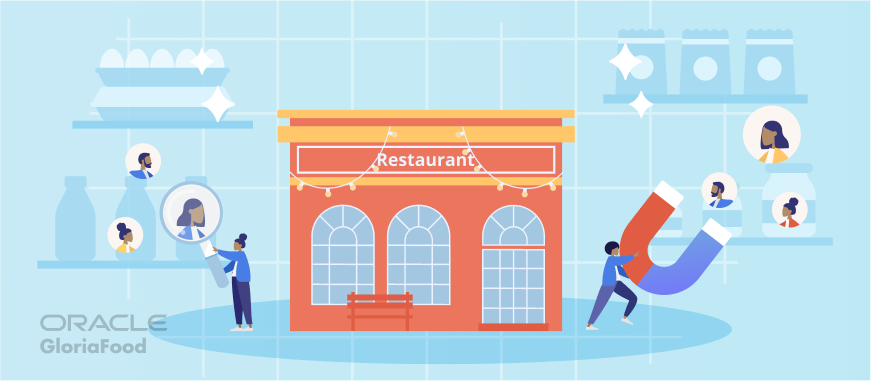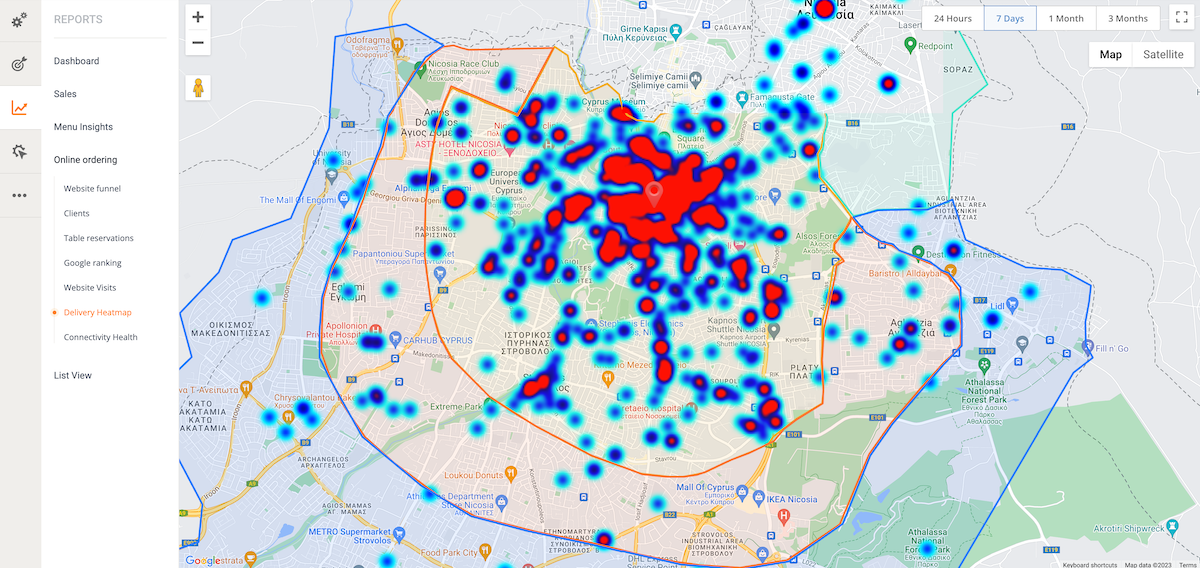- 1.What Is Customer Segmentation for Restaurants?
- 2.What Are the Advantages of Customer Segmentation?
- 3.4 Main Types of Customer Segmentation for Restaurants
- Restaurant customer demographics segmentation
- Geographic segmentation for a restaurant
- Psychographic segmentation in a restaurant
- Behavioral segmentation in a restaurant
- 4.5 Restaurant Customer Segmentation Tips
Are your marketing campaigns not performing as well as you’d hoped? Maybe it’s because you’re not properly targeting them to the right customer. To do that, you need accurate restaurant customer segmentation.
Below, we tell you all about what it means, why you need it, and how you can do it in a way that makes customers happy and your restaurant profitable.
What Is Customer Segmentation for Restaurants?
Customer segmentation refers to the act of categorizing your customers into different groups based on traits, behaviors, or characteristics that they all share.
You might group them on how often they visit your restaurant, their food preferences, spending habits, social groups, and so on.
Customer segmentation should happen before targeting (reaching out) and positioning (choosing the message). Otherwise, your strategy might fail because the customers you selected aren’t interested in that particular message.
What Are the Advantages of Customer Segmentation?
There are many different types of clientele in a restaurant, and not all of them want the same things, like the same things, or will be interested in all your promotional messages.
Detailed restaurant customer segmentation can help you improve retention because you can send targeted messages that you know have a higher chance of converting.
Consequently, you will spend less money on marketing and have a higher return on investment.
Proper segmentation will also improve the customer experience because clients won’t get bombarded with irrelevant messages. Instead, they’ll only get the ones they are interested in, which strengthens brand trust.
4 Main Types of Customer Segmentation for Restaurants
If you’re overwhelmed by the many different types of customers in restaurants, know that you can group them based on these four large segments.
Restaurant customer demographics segmentation
Demographic segmentation refers to who your customers are based on age, gender, occupation, education, income, ethnicity, or religion.
This is a very broad segment that requires a lot of restaurant demographic research. However, you can break it up into any number of smaller segments based on what you’re trying to achieve.
For example, you can target people based on age and occupation only, such as Millennials who work in IT if your restaurant is located next to many office buildings where you could market your lunch specials.
Geographic segmentation for a restaurant
Geographic segmentation refers to dividing the customers of a restaurant based on location. This can include country, state, city, county, neighborhood, or postal code.
Geographic data can help you identify where your customers are coming from and how you can attract people from further away.
For example, our online ordering system comes with a handy delivery heatmap that shows you the highest and lowest order density areas.
You can target areas marked with blue (low density) with special promotions or free delivery to persuade them to order more often.
Psychographic segmentation in a restaurant
Your customers are more than a collection of numbers and data. They have varied interests and personalities that you can appeal to. That’s what psychographic segmentation is all about.
Some examples of psychographics are personality, hobbies, beliefs, lifestyle, and values. If many of your customers care a lot about the environment, let’s say, implementing green initiatives such as lowering food waste can help you appeal to them.
Behavioral segmentation in a restaurant
Finally, restaurant customer segmentation wouldn’t be complete without a segment targeting behavior, which is one of the most interesting and potentially profitable segments.
This is where you can get creative on how you’re going to convince customers to choose your restaurant or to become loyal clients.
This segment includes data like frequency of visits, how much they spend at your restaurant, what their favorite dishes are, and so on.
5 Restaurant Customer Segmentation Tips
1. Create segments based on specific goals
For customer segmentation to be profitable and measurable, you need a solid goal that you’re trying to achieve.
Are you looking to increase sales for a particular dish? Get more online orders from a specific neighborhood? Or perhaps convince more people to book a table online?
A clear goal can help guide you when you’re building your segment and ensure you never lose track of why you’re doing this.
2. Test multiple segments, messages, and platforms
Some segments and marketing strategies will prove profitable, while others won’t. That doesn’t mean that an unsuccessful segment should deter you from trying something new.
You will likely test a lot of different segments, messages, as well as communication platforms before you find a couple of successful recipes that you can replicate time and again.
A particular segment might be more reachable over social media than email, or they might appreciate a humorous approach over a dry one. The only way to know for sure is to test.
3. Favor broader segments over smaller ones
When it comes to segment size, you need to find the balance between broad (such as all the female customers) and narrow (such as all the female customers aged 20 to 30 who order dessert at our restaurant every weekend).
And if you had to choose, a broader segment is preferable, because the very specific one will likely have too few people in it to be relevant or profitable.
Craft segments that will have a sizeable impact on the success of your business, whether that translates into more visits, a higher check value, and so on.
4. Measure results and track relevant metrics
There’s no way to know if a segment, message, or platform is successful or not if you don’t track the results that come in based on the goal you selected.
If your goal was to increase table bookings, how many more customers have clicked on the Table Reservation button? Out of those, how many people have actually booked a table? Metrics like these can help you adjust all or part of your strategy until you reach the desired results.
5. Automate customer segmentation to save time and effort
If you’re looking to target your restaurant customers based on behavior, such as how many times they’ve ordered from you in the past or how much they’ve spent, you can use the segmentation feature integrated into our online ordering system.
This enables you to reward loyal customers and keep them coming back to your restaurant with tempting offers and promotions that are exclusive to them.
Instead of taking the time to create this segment manually, our software does it for you, so you can simply set up the promo and add it to the top of your online menu in minutes.
Learn more about advanced restaurant customer segmentation in the video tutorial below:
And if you want to automate segmentation even further, try our Autopilot email campaign software designed to target customers who have yet to place a second order, haven’t ordered in a while, or have abandoned their cart.
The module deals with segmentation, so all you need to do is choose the campaign(s) you want to send out and let them run in the background. Here’s how:
Final Thoughts
If you want to increase the success of your marketing campaigns and ensure your time and budget don’t go to waste, employ restaurant customer segmentation based on your business goals.
Segmenting your audience according to demographics, geographics, psychographics, and behaviors can help you provide a unique, personalized experience to every customer group.


